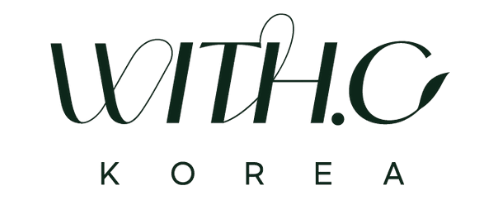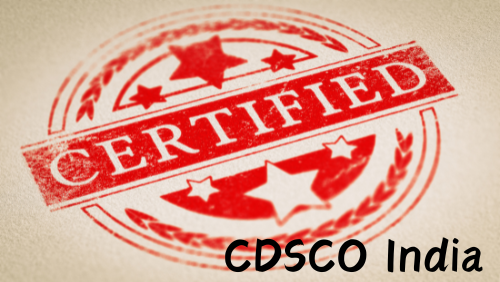How does the CDSCO process work?
In accordance with India’s local law, specifically the Drugs and Cosmetics Act, 1940, as per Gazette Notification G.S.R 763(E), cosmetics and medicines must undergo registration and certification by a government-designated body.
The relevant laws can be easily found by searching for CDSCO on Google. The registration process with CDSCO is conducted online through their dedicated portal, known as the SUGAM portal.
After submitting an application, it is necessary to visit the office of the Drugs Controller General of India, the competent authority, within 15 days to submit the required documents.
Related certifications are typically entrusted to agencies with expertise in local regulations. However, even when outsourcing, the manufacturer or exporter must handle document preparation, requiring familiarity with the necessary contents.
As for the specific documents required, these can also be easily obtained from CDSCO-related websites.
[List of Documents]
The list of documents registered on the Indian website is as follows.
- Covering Letter mentioning the purpose of application
- Authorisation from the manufacturer (duly authenticated)
- Filled in Part-I of Second Schedule D
- List of Ingredients along with its percentage contents
- Labels of proposed products
- Specifications and testing methods
- Pack insert
- Manufacturing Licenses/undertaking for no provision of manufacturing license in the country
- Free Sale Certificate (duly authenticated)
- Non Animal Testing Declaration
- Eclaration for Heavy Metal and Hexachlorophene content
- Other documents (If any)
- Application in Form COS-1
- Fee: Original Bharatkosh e-receipt for fee paid
These documents basically require PDF format and only small files of less than 10MB can be used.
Please note that if the material is not in English, a notarized translation and Apostille* are required.
(* Apostille: Obtaining a confirmation letter from an agency registered as an Apostille authority, such as the Ministry of Foreign Affairs and the Ministry of Justice, to recognize the validity of an official document)
The above list is a compilation of all the information required for the document, so it can be organized as follows.
- Covering Letter
: Provide detailed information in a free format regarding the purpose of certification, manufacturer location, packaging size, product characteristics, warranty, etc. (Applicant’s signature required). - Warrant
: Delegates the application process and accepts local notarization and embassy apostille in India.
1) Fill out the manufacturer’s name and address, manufacturing facility of the product to be registered, etc., as per Form COS-1 provided.
2) Fill in the name and address of the authorized Indian agent as per Form COS-1 provided.
3) According to Part 4 of the 2020 Cosmetic Regulations, separately write the name of the cosmetic, the address of the manufacturer, and the type of cosmetics.
4) Provide names, signatures or seals of both the agent and the manufacturer, along with the date. - Part-1 of Second Schedule D
: Provide details about the manufacturer and product, chemical composition of the product, relevant compliance agreement, etc.
1) Domestic company details: Include company name, address, contact information, management team of seller and producer, domestic and overseas business overview, Indian buyer or agent information.
2) Product details: Include product name and specifications, chemical composition, material name, other specifications and test methods, packing list.
3) Consent: CDSCO compliance and information use agreement.
4) Confirmation of non-conformance with animal testing: Confirm that no animal testing was conducted on the product in question.
5) Confirmation that the product does not contain substances hazardous to the human body: Confirm that the product does not contain heavy metals or hexachlorophene.
6) Other documents: Attach if further explanation is needed. - Payment receipt
: Provide the e-receipt issued after online payment through Bharatkosh, the Indian government payment site.
[Duration and Cost]
The duration for the certification process can range from as short as 3 months to as long as 6 months, but it seldom exceeds 6 months.
The certification costs are as follows:
- Basic registration fee: $250
- Manufacturing factory registration fee: Starting from $500
- Major category registration: Starting from $1,000
- Detailed classification registration: $50
Even if the manufacturing plant is the same company, separate registration is required if the product is produced at a different site. Additionally, major categories refer to overarching product categories such as lipsticks, mask packs, and skincare products. Subcategories are products sold as sub-products (e.g., lipstick: pink, orange color products).
[Validity Period and Renewal]
The certification is valid for three years. The cost to extend certification for the same period is $1,000.
Up to this point, we have covered the basic procedures for CDSCO. For detailed information on the certification process, please refer to the Guidance on the CDSCO website below.
https://cdsco.gov.in/opencms/export/sites/CDSCO_WEB/Pdf-documents/cosmetics/Guidance-Document-on-Registration-and-Import-of-cosmetics-into-India-converted.pdf
If you found today’s post helpful, please show your support in the comments!

